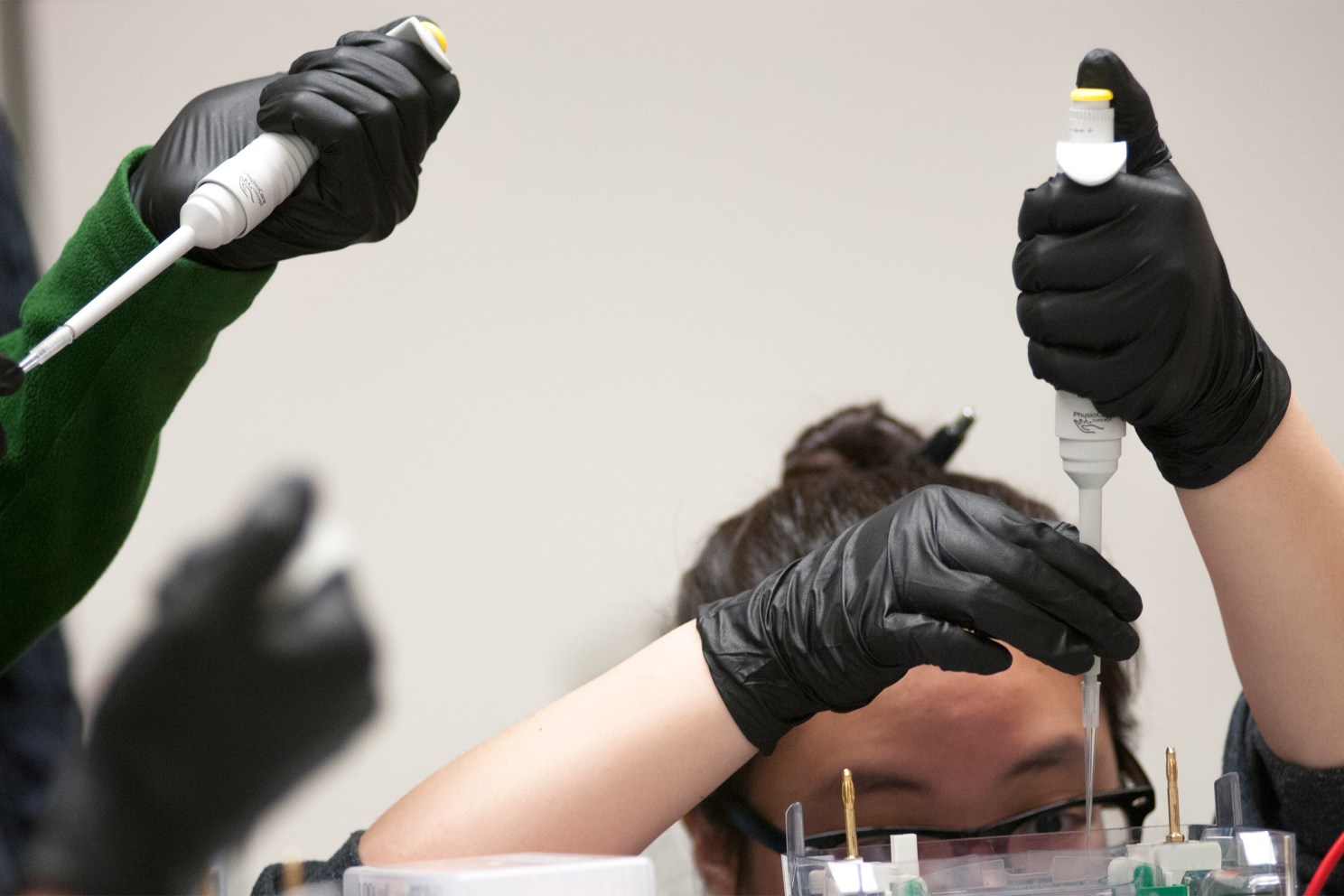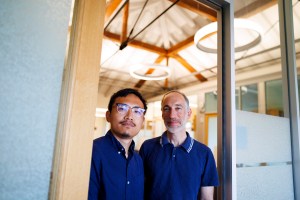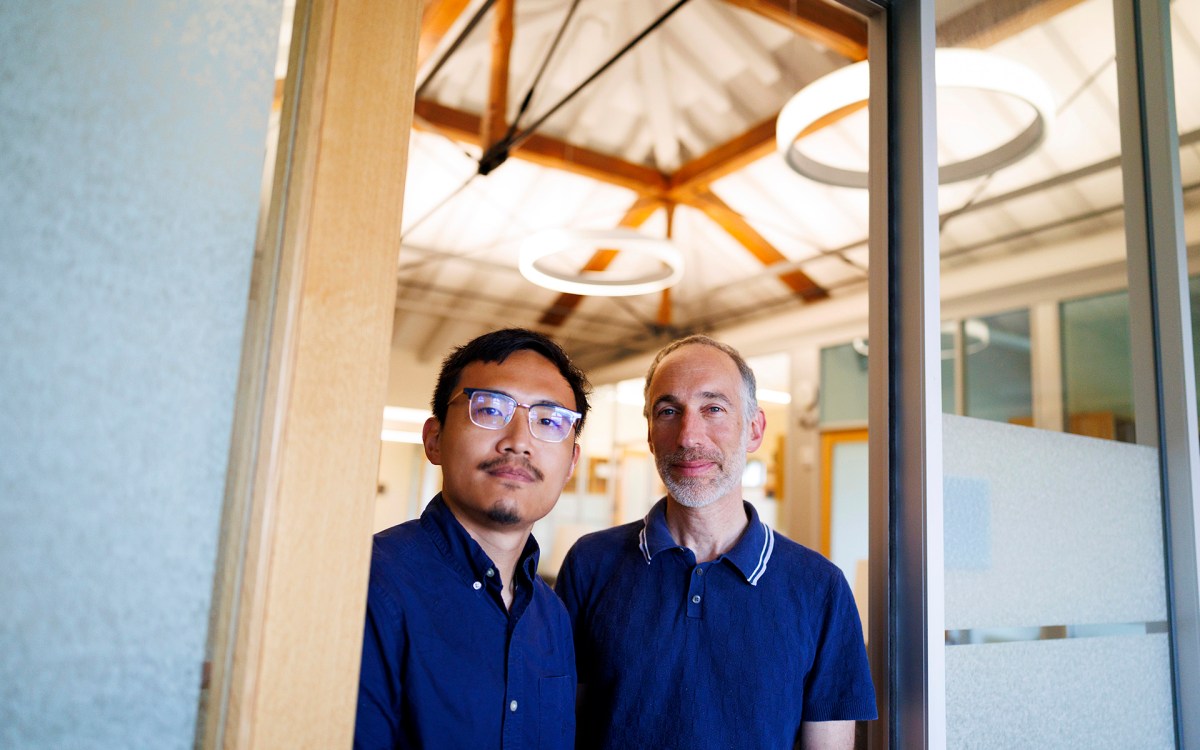Aramont Fund supports early-career science scholars

The Aramont awards provide critical funding to advance high-risk, high-reward science conducted by graduate students, postdoctoral fellows, and junior faculty at Harvard. Silvia Mazzocchin/Harvard file photo
The Office of the Vice Provost for Research is pleased to announce the inaugural cohort of Aramont Fund for Emerging Science Research awardees who, together, establish a cross-University community of early-career science scholars.
“This is fantastic recognition for promising scientists at the start of their careers” said Rick McCullough, vice provost for research and professor of materials science and engineering. “We are delighted by the ambition represented in these projects and look forward to the developments the next year will bring.”
The goal is to support not only important and compelling research, but to foster a “One Harvard” network of colleagues across School lines — a network that will only expand with each year’s awards.
The research fund is made possible by a generous gift from the Aramont Charitable Foundation and provides critical funding to advance high-risk, high-reward science conducted by graduate students, postdoctoral fellows, and junior faculty at Harvard Medical School, the Harvard T.H. Chan School of Public Health, the Harvard John A. Paulson School of Engineering and Applied Sciences, Graduate School of Arts and Sciences, and the Faculty of Arts and Sciences.
This year’s awarded projects include:
“Discovery of a topological superconductor for faultless quantum computing” by Julia Mundy, assistant professor of physics, Faculty of Arts and Sciences. The construction of a robust, faultless quantum computer could lead to scientific advances in fields ranging from biochemistry to astronomy by solving problems that are computationally intractable with current technologies. Mundy’s project combines techniques, tools, and expertise from multiple disciplines to design and construct a new material system that could form the backbone of a novel quantum information platform.
“Metabolic control of global gene expression during the maternal-to-zygotic transition” by Lital Bentovim, research fellow in systems biology, Harvard Medical School. Bentovim has designed a project that leverages her expertise in metabolic control of development to study transcriptional control at the systems level with cutting edge quantitative tools. The project ultimately aims to determine how cellular metabolism regulates developmental gene expression, toward a possible new avenue for therapeutic interventions.
“Role of CREB-regulated transcriptional coactivator CRTC-1 in epigenetic regulation of aging” by Carlos Giovanni Silva-García, postdoctoral research fellow in the Department of Genetics and Complex Diseases, Harvard T. H. Chan School of Public Health. Aging can be accelerated by many internal and environmental factors and is the principal risk factor for multiple chronic health conditions including cancer, diabetes, and neurodegeneration. While the molecular mechanisms that govern this process remain to be well understood, this project elucidates the role of highly conserved genes in aging that will help to develop therapeutics to improve health in the elderly.
“Constructing a quantitative molecular model of the bacterial cell cycle” by Po-Yi Ho, fifth year Ph.D. student in applied physics, Graduate School of Arts and Sciences and Harvard John A. Paulson School of Engineering and Applied Sciences. How bacteria decide when to divide and when to replicate their DNA are basic and longstanding problems. Recent advances in microfluidics and microscopy have led to new and important clues in the form of striking statistical behaviors in the timing of cell cycle events at the single-cell level. Ho’s project aims to propose a quantitative molecular model for the bacterial cell cycle that captures the observed single-cell behaviors.
“The structure of the membrane-to-membrane protein bridge that transports lipopolysaccharide to the cell surface in Gram-negative bacteria” by Rebecca Taylor, fourth year graduate student in chemistry and chemical biology, Faculty of Arts and Sciences. The protective membranes of Gram-negative bacteria provide resistance to many clinically-used antibiotics. Taylor’s experiment aims to determine the structure of the machine responsible for building these protective membranes and to understand the mechanism of membrane production. These studies will inform the development of innovative and effective treatments for Gram-negative bacterial infections.





